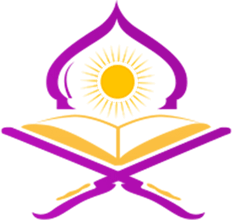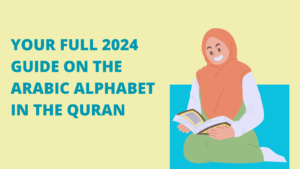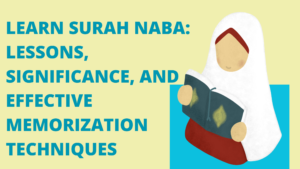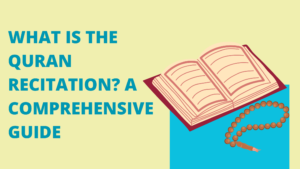Tajweed symbols in the Quran serve as graphical notations and diacritical marks to guide proper pronunciation and recitation. They convey specific rules and principles of Tajweed, ensuring accurate articulation, intonation, and rhythm.
Tajweed Symbols include markers for mandatory stops, permissible pauses, recommended pauses, and pronunciation nuances like elongation and clear articulation. Notably, symbols such as Sajda indicate verses where prostration is encouraged, signifying reverence and devotion. Understanding these symbols is vital for precise Quranic recitation, preserving meaning, and enhancing the spiritual experience of engaging with the holy text.
Explanation of the meanings of symbols and signs in the Holy Quran. When we hold the Quran in our hands and start reading, we encounter many signs and symbols.
It is essential for the reader to understand the meaning of each one and adhere to it. In this topic, we will explain all the symbols.
Table of Contents
Definition of Tajweed Symbols In The Quran:
Tajweed symbols in the Quran are graphical notations and diacritical marks employed to guide the proper pronunciation and recitation of the Quranic text.
Tajweed, an essential aspect of Quranic recitation, involves applying specific rules and principles to ensure accurate pronunciation, intonation, and rhythm. The symbols help convey these rules, enhancing the reader’s understanding of how each letter and word should be articulated.
Symbols and signs in the Noble Quran:
The Noble Quran, the holy scripture of Islam, is revered for its profound guidance and wisdom. To enhance the understanding and proper recitation of the Quranic verses, various symbols and signs have been employed. These symbols serve as valuable aids for readers, providing instructions on pauses, recitation nuances, and acts of worship during the Quranic recitation.



| Symbol | Transliteration | Meaning |
| ۩ | Sajda | Marks a verse where prostration (sujud) is performed as an act of worship and humility. |
| مـ | Waqf Lazim | Denotes a mandatory stop where the reader must pause for a designated duration. |
| | Waqf e Taam | Signifies the end of a verse, indicating a full stop, allowing the reader to pause briefly. |
| صلی | Salli | Indicates the point where the reader should say ‘Salli’ or invoke blessings upon the Prophet. |
| قلی | Qalli | Indicates where the reader should say ‘Qalli’ or reduce the length of the pronunciation. |
| ۚ | Qif | Signifies a permissible pause, not mandatory, allowing a brief stop without obligation. |
| ۖ | Waqf e Kafi | Indicates a sufficient stop, providing more flexibility than a mandatory stop. |
| ۗ | Waqf e Hasn | Indicates a preferable stop, suggesting that it is better to pause at this point. |
| ۘ | Waqf e Qabeeh | Indicates that stopping here is disliked or improper, urging the reader to avoid pausing. |
| ۜ | Waqf e Murakhkhas | Indicates a selective or conditional stop, allowing a pause based on specific conditions. |
These symbols are commonly found in the Quran, guiding readers on the appropriate pauses and actions during recitation.
Here is a detailed analysis of the above and more.
1. Permissible to pause:
The first symbol ‘ صلى ‘ means ‘Sili’ (connection), which means it is permissible to pause, but continuation is preferable. For example, in this verse, it is permissible for us to pause at the word ‘Rabbihim,’ and it is also permissible to connect it to what comes after, and we do not pause even at the word ‘Al-Muflihoon.'”

2. Not allowed pause
The second symbol ‘لا’ means “Laa” (No), and you are not allowed pause. For example, in the following verse, it is not permissible to pause at the word ‘Al-Malaika’ because it would distort the meaning of the verse.

3. Prolongation symbol
The third symbol ‘~’ indicates a prolongation. For example, in the word ‘as-samaa,’ you notice the prolongation symbol above the ‘alif,’ so it is read as ‘as-samaaaaa.’
4. Ithhar
The fourth symbol, which resembles the head of the letter ‘ha,’ indicates Ithhar (clear pronunciation). For example, in this verse, you must pronounce the letter ‘noon.’
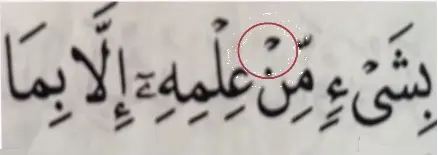
5. Tanween
The fifth symbol, which is Tanween, shows that there is an N sound. For example, in the following verse, we have two identical kasra symbols under the letter ‘dal’ and two overlapping damma symbols above the letter ‘ta,’ so we must show the silent ‘noon’ in Tanween.
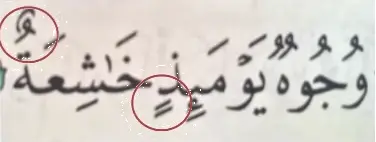
6. Pausing is preferable
The sixth symbol ‘قلى’ means it is permissible to connect, but pausing is preferable. This is illustrated in the following verse. It is better to pause at the word ‘sa’altum’ and then continue with the word ‘wadribat.’

7. Mandatory pause (waqf laazim)
The seventh symbol, which is a stretched letter ‘meem,’ means mandatory pause (waqf laazim). We must pause at the word ‘wala’nuwa’ as not doing so would mislead the listener to think that the Jews were the ones who said it, while, in fact, it is a response to what the Jews said.

8. Letter should not be pronounced
The eighth symbol is a small circle sometimes placed above the ‘alif,’ indicating that the letter should not be pronounced whether in pause or continuation. For example, in the word ‘mi’ata,’ we read it as ‘mi’atin.’

9. There is a stop
The ninth symbol, representing the letter ‘seen,’ means there is a stop. In the following verse, we have the letter ‘seen’ above the word ‘awjan,’ so we stop without taking a breath, then continue.

10. Consecutive Tanween
The tenth symbol is consecutive Tanween, indicating two different Tanween sounds (such as two fathas, two kasras, or two dammas). This means there is a rule of Ikhfa or Idgham, and the determining letter for the rule is the one that follows the Tanween.

11. Permissible to connect or pause
The eleventh symbol, which is the letter ‘jeem,’ means it is permissible to connect or pause. In the following verse, we can either pause at the word ‘al-mawt’ or connect it to what comes after, meaning we do not pause even at the word ‘al-kafireen.’

12. It is not permissible to pause at either location
The twelfth symbol, which consists of three dots followed by another three dots, means it is not permissible to pause at either location. For example, in the following verse, it is not allowed to pause at the word ‘la raiba’ and also not allowed to pause at the word ‘fihi.’
The correct approach is either to pause at the first set of dots, meaning at the word ‘la raiba,’ then say ‘fihi hudan lil-muttaqeen,’ or pause at the word ‘fihi,’ meaning ‘dhalika al-kitabu la raiba fihi,’ then say ‘hudan lil-muttaqeen.’ Alternatively, you can continue without pausing at the first and second set of dots, reading the entire verse.

13. This letter is pronounced during pausing.
The thirteenth symbol, which is a rectangular circle placed above the ‘alif,’ means that this letter is pronounced during pausing. So, if we pause, we pronounce it, and if we continue, we skip it. It is called the ‘seven alifs.’ You can also find it above the ‘alif’ in the word ‘ana khayrun,’ where you pronounce it as ‘ana’ during pause and omit it during continuation.

14. Ibdal Rule:
The fourteenth symbol, represented by a black circle, indicates that there is inclination. There is also a black circle in some places, replacing the ‘hamza,’ indicating the rule of replacement.
Instead of saying ‘yu’akhkhirukum,’ we say ‘yuwakhkhirukum,’ and instead of saying ‘law nasha’u asabnahum,’ we say ‘law nasha’u wasabnahum,’ and instead of saying ‘min as-sama’i aayatin,’ we say ‘min as-sama’i yaatin.’ The ‘hamza’ has been replaced with a prolonged letter of the same articulation.

15. the rule of Iqlab
The fifteenth symbol, which is a Tanween, has a ‘meem’ above it with a fatha, kasra, or damma. This indicates the rule of Iqlab, where the ‘meem’ is replaced. For example, in the word ‘mi’ata,’ you read it as ‘mi’atin’ during continuation.

16. Pause without taking a breath
The sixteenth symbol, consisting of a small circle with a ‘meem,’ means there is a sakta, where you pause without taking a breath.
17. Pronounce Seen or Pronounce Saad:
In the following verse, we have the letter ‘seen’ above the word ‘awjan,’ so we stop without taking a breath and then continue.
In the given context, the explanation is about words written with the letters “ص” (Sad) and “س” (Seen). The pronunciation guidance is as follows:
For the word where “ص” (Sad) is the first letter:
In this case, you read the letter “ص” (Sad) first, then the letter “س” (Seen). The example given is “المصيطرون,” and you pronounce it by emphasizing the letter “ص” (Sad) first. The pronunciation is “Al-Musayṭirun.”

For the word where “س” (Seen) is the first letter:
In this case, you read the letter “س” (Seen) first, then the letter “ص” (Sad). The example given is “يبسط,” and you pronounce it by emphasizing the letter “س” (Seen) first. The pronunciation is “Yabsut.”

These guidelines help in understanding the correct pronunciation order when dealing with words that include both the letter “ص” (Sad) and the letter “س” (Seen).
18. The Sajdah:
The Sajda symbol in the Quran holds profound significance, serving as a distinctive marker that designates a specific juncture where the reader is encouraged to engage in an act of prostration. This act of prostration is a form of worship characterized by kneeling and bowing down in prayer, symbolizing deep reverence and submission to Allah. Manifesting as either an oval or a mihrab-like shape in the page’s margin, and occasionally positioned above the text, this symbol serves as a visual cue guiding the reader to pause their recitation upon encountering the marked verse.
The inclusion of the Sajda symbol in the Quranic text indicates the recommendation for the reader to not merely read but to also embody the words in a tangible manner through prostration. This act goes beyond a mere verbal recitation, transforming into a physical manifestation of humility and devotion. The deliberate placement of the Sajda symbol underscores the specific verses’ spiritual weight, prompting the reader to pause, reflect, and express their submission to the divine.
Tajweed Stop Signs
The Tajweed symbols play a crucial role in Quranic recitation, guiding the reader on when to pause or stop, impacting the meaning and beauty of the recitation. Some key symbols include:
- Waqf Lazim (مـ): Indicates a mandatory stop, crucial for preserving the intended meaning of the verse.
- Waqf e Taam (): Signifies the end of a verse, requiring a full stop and often found at the end of a chapter.
- Waqf e Qabeeh (ۘ): Suggests that stopping here is disliked or improper, requiring a brief pause.
- Waqf e Hasn (ۗ): Denotes a preferable stop, encouraging a pause for reflection.
- Waqf e Kafi (ۖ): Indicates a sufficient stop, acceptable but not obligatory.
- Waqf e Murakhkhas (ۜ): Represents a selective or conditional stop, offering flexibility.
- Qalqalah (ق, ط, ب, ج, د): Letters causing a vibrating effect, signaling a slight pause.
These symbols contribute to maintaining the correct rhythm, flow, and eloquence in Quranic recitation, ensuring accurate communication of the Quranic message. Tajweed, the set of rules for correct pronunciation, emphasizes giving each letter its due rights when reciting. Tajweed symbols are essential for conveying the depth and spirituality of the Quranic verses.
Regarding pauses between recitations, the length varies based on the type of Tajweed rule:
- Mandatory Stop (واجب): Typically, pause for a breath before continuing.
- Permissible Stop (جائز): Optional, with a brief pause if chosen.
- Preferred Pause (مستحب): Similar to a mandatory stop but not obligatory.
- Silent Pause (سكتة): Very brief, a slight suspension without taking a full breath.
- Continuation (لا): No pause; continue reciting.
The importance of stopping rules lies in preserving meaning, facilitating reflective recitation, maintaining a rhythmic flow, respecting the sacred text, aiding memorization, enhancing recitation quality, and serving as an educational tool. It also fosters linguistic precision, discipline, and a deeper spiritual connection with the Quran.
When Did The symbols of the Quran exist?
When the Quran was revealed to Prophet Muhammad (peace be upon him), there were no diacritical marks or vowel points known for the words. The Prophet (peace be upon him) would instruct his companions and followers to write the Quran in its designated places and in the order in which the verses were revealed, ensuring the correct understanding of the text.
As the Islamic state expanded, and many non-Arabs embraced Islam and showed interest in reading and comprehending the Quran, Caliph Ali ibn Abi Talib (may Allah be pleased with him) began teaching Muslims the fundamentals of grammar to ensure accurate recitation. The science of grammar evolved, and markings for the Quran were introduced, consisting of symbols for each letter and word in the Quranic verses.
Benefits of Learning the Symbols of The Qurah:
Learning Tajweed symbols and applying the rules of Tajweed in Quranic recitation offers several benefits for individuals seeking to enhance their understanding and proficiency in reading the Quran. Here are some key advantages:
1. Accurate Pronunciation:
Tajweed symbols guide correct pronunciation, ensuring that each Arabic letter is articulated accurately. This precision in pronunciation is crucial for conveying the intended meanings of the Quranic verses.
2. Improved Recitation Fluency:
Learning Tajweed symbols helps improve the flow and rhythm of Quranic recitation. It enables readers to recite with a smooth and melodious tone, enhancing the overall fluency of their recitation.
3. Spiritual Connection:
Applying Tajweed rules fosters a deeper spiritual connection with the Quran. The careful pronunciation and adherence to rules reflect a commitment to approaching the Quran with respect and devotion.
4. Enhanced Understanding:
Tajweed rules contribute to a clearer understanding of the Quranic text. By pronouncing each letter accurately, readers are more likely to grasp the intended meanings and nuances of the verses.
5. Preservation of Quranic Text:
Learning Tajweed contributes to the preservation of the original pronunciation of the Quranic text. This preservation ensures that the Quran is recited consistently across generations, maintaining its linguistic integrity.
6. Adherence to Sunnah:
Proper recitation, guided by Tajweed, aligns with the Sunnah (teachings and practices of Prophet Muhammad, peace be upon him). The Prophet emphasized the correct recitation of the Quran, making Tajweed a practice rooted in his teachings.
7. Aesthetically Pleasing Recitation:
Tajweed enhances the beauty of Quranic recitation. Adhering to proper pronunciation and rhythm makes the recitation more melodious and aesthetically pleasing, elevating the spiritual experience.
8. Teaching and Passing on Knowledge:
Individuals who learn Tajweed become equipped to teach others. This facilitates the transmission of Quranic knowledge, ensuring that correct recitation practices are passed on within communities.
9. Increased Confidence:
Mastering Tajweed instills confidence in individuals when reciting the Quran. Knowing that one is reciting with accuracy and adhering to established rules enhances the overall confidence of the reader.
10. Elevated Worship Experience:
Implementing Tajweed rules transforms Quranic recitation into a profound act of worship. The careful enunciation and adherence to rules enhance the worship experience, allowing individuals to connect with the divine message more deeply.
Learn Tajweed Online Witn Bayan Al-Quran:
Embark on a transformative journey of Quranic learning with Bayan Al-Quran’s state-of-the-art Tajweed courses. Our online platform is dedicated to providing an authentic and immersive Tajweed learning experience, bringing the timeless beauty of Quranic recitation to learners around the world.
Why Choose Bayan Al-Quran for Tajweed Learning:
- Expert Instructors: Learn from qualified and experienced Tajweed instructors who are passionate about imparting the art of pristine Quranic recitation.
- Structured Curriculum: Our courses follow a structured curriculum covering fundamental Tajweed rules, pronunciation intricacies, and advanced recitation techniques.
- Interactive Learning: Experience dynamic and interactive lessons with video tutorials, audio recordings, and engaging exercises to reinforce your Tajweed skills.
- Live Sessions: Join live sessions with our scholars for real-time guidance, personalized feedback, and the opportunity to interact with a supportive learning community.
- Accessible Anytime, Anywhere: Enjoy the flexibility of learning Tajweed at your own pace, fitting seamlessly into your schedule, and accessible from the comfort of your home.
- Comprehensive Resources: Access a rich repository of Tajweed resources, including practice materials, quizzes, and additional learning aids to enhance your understanding.
- Authentic Quranic Experience: Immerse yourself in the authentic recitation of the Quran, honing your skills to recite with precision, melody, and a profound connection to the divine text.
In summary, learning Tajweed symbols and rules contributes to a more accurate, meaningful, and spiritually enriching experience when engaging with the Quran. It not only ensures correct pronunciation but also deepens the connection between the reader and the sacred text.
Conclusion:
Tajweed symbols in the Quran are graphical markers aiding proper pronunciation and recitation. They convey rules of Tajweed, ensuring accurate articulation and rhythm.
These symbols denote mandatory stops, permissible pauses, pronunciation nuances, and verses for prostration. Understanding these symbols is crucial for precise recitation, preserving meaning, and enhancing the spiritual experience of engaging with the Quran.
